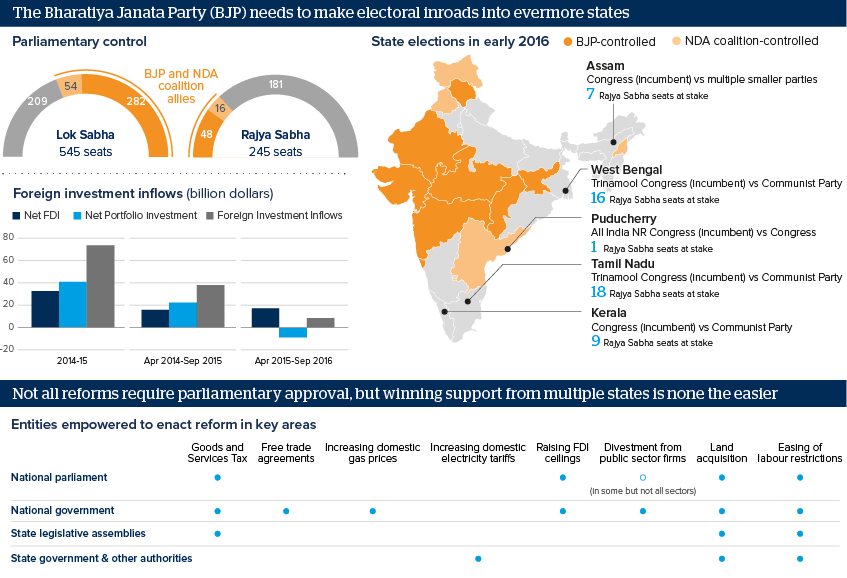India faces complex route to reforms in 2016
Incremental opening of the economy will continue but different reforms require buy-in from different stakeholders

Source: Parliament of India, Reserve Bank of India, Oxford Analytica, Bloomberg, India’s Central Statistical Organisation
Outlook
Especially in early 2016, fear of additional capital flight will be as acute as the need to maintain high GDP growth. This will lead Prime Minister Narendra Modi's government to implement reforms through executive channels, wherever possible, in the hope of boosting market confidence and drawing enough foreign investment to plug deepening shortfalls in domestic investment and to prevent a balance-of-payments crisis.
To advance Modi's legislative agenda in such key areas as tax and labour, greater financial and ideological compromise would be necessary with national and regional opposition parties. Neither side will yield easily; in some instances, positions will harden as important state elections draw closer in 2016 and in Uttar Pradesh in early 2017.
Impacts
- There is considerable cross-party support for the GST bill, but differences over fine-print will necessitate dilution of the bill.
- Labour reforms will be pushed primarily through state governments, BJP governments in Gujarat and Rajasthan taking the lead.
- The government is pursuing high, but not necessarily high-quality, GDP growth despite promises to create jobs and improve living standards.
See also
- Indian polls to shape BJP politics, not reform outlook - Mar 4, 2016
- Prospects for India in 2016 - Dec 1, 2015
- More graphic analysis